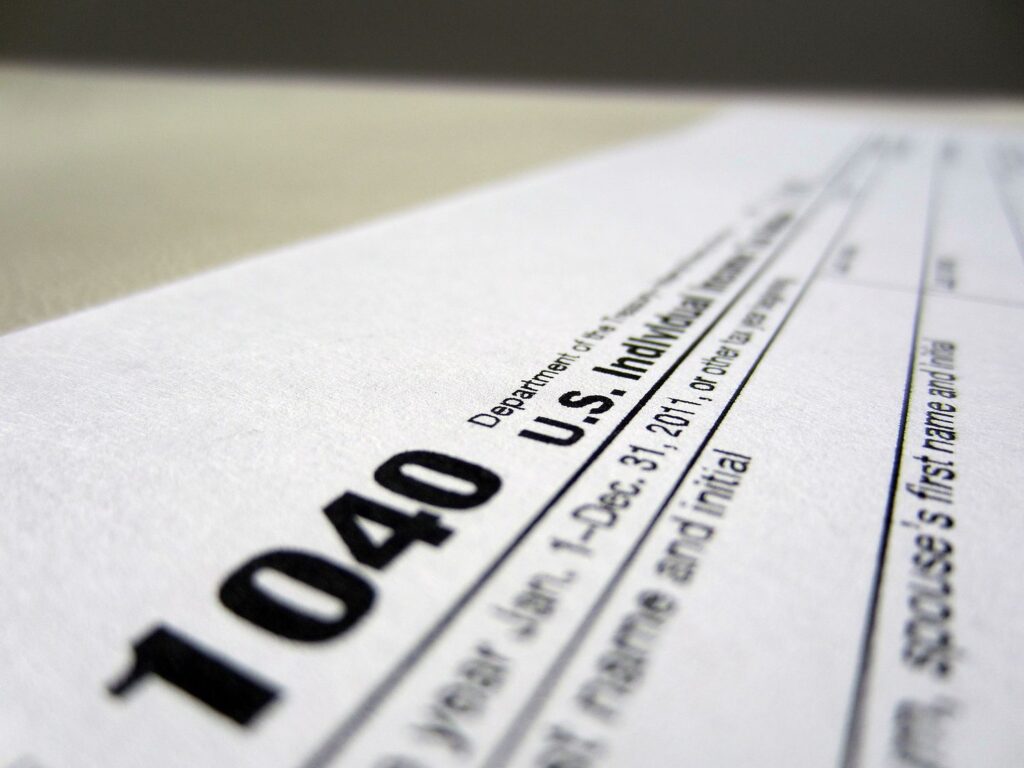:max_bytes(150000):strip_icc():format(jpeg)/6757838321_ad13328b31_k-4718104a261042f388ed9ec6c762dca3.jpg)
What Is Form 1099?
A Form 1099 is issued to report non-employment income to the Internal Revenue Service (IRS). This type of income can include interest from your bank, dividends from investments, or payment for freelance or contract work. Issuers, such as financial institutions or businesses that hire independent contractors, send one copy to both the IRS and the taxpayer who received the income.
Key Takeaways
- A 1099 form reports non-employment income to the IRS.
- The IRS uses these forms to verify income reported on your Form 1040, the individual income tax return.
- Individuals do not complete 1099 forms; rather, businesses and financial institutions do.
- 1099 forms must be sent to the recipient by early February.
Understanding Form 1099
Form 1099 is used to report a variety of income types, including non-employment earnings such as freelance pay, IRA distributions, and interest. The IRS refers to Form 1099 as an “information return” because it helps the agency track taxable income.
Businesses and financial institutions are responsible for completing and submitting the forms to the IRS. You, as the recipient, will also receive a copy. For most people, 1099 forms are essential for filing accurate tax returns, ensuring that income is reported correctly to avoid penalties or an audit.
Who Must File Form 1099?
Generally, individual taxpayers do not complete 1099 forms. Instead, businesses or financial institutions that have paid out income will issue them. For instance, a business that hires independent contractors will file a 1099 for any contractor paid $600 or more during the tax year. Banks, investment firms, and other entities that pay interest or dividends are also responsible for issuing 1099 forms.
Typically, 1099 forms must be sent to the IRS by January 31st, and recipients should receive their copies by early February.
You do not usually have to submit the 1099 forms you receive to the IRS with your tax return, but you should keep them with your other tax records in case of an audit.
Types of Form 1099
There are several variations of Form 1099, each designed for specific types of income. Some common types include:
- 1099-DIV: For reporting dividends and distributions from stocks or mutual funds
- 1099-G: For money received from government sources
- 1099-INT: For interest income from savings or checking accounts
- 1099-LTC: For receipt of long-term care and accelerated death benefits
- 1099-MISC: For reporting miscellaneous income, such as payments made to independent contractors
- 1099-NEC: Specifically for non-employee compensation, often used by businesses paying independent contractors
- Form 1099-PATR: For cooperative distributions
- 1099-R: For distributions from retirement accounts or pensions.
- 1099-SA: For reporting distributions from a medical savings account.
Form 1099-DIV: Dividends and Distributions
If you own a stock or a mutual fund that pays dividends, you should receive this form.
All pages of Form 1099-DIV are available on the IRS website.
Form 1099-INT: Interest Income
You should receive a 1099-INT form if you have a checking, savings, or another bank account that earns interest.
All pages of Form 1099-DIV are available on the IRS website.
Form 1099-MISC: Miscellaneous Income
You should receive this form if you worked for someone as an independent contractor. If you’re self-employed and have several clients, you should receive a 1099-MISC from each client who paid you $600 or more.
All pages of Form 1099-MISC are available on the IRS website.
Form 1099-R
The full name of this form is Form 1099-R: Distributions from Pensions, Annuities, Retirement or Profit-Sharing Plans, IRAs, Insurance Contracts, etc. If you received $10 or more from your IRA or another source of retirement income, you should receive a 1099-R.
All pages of Form 1099-R are available on the IRS website.
Tax Considerations
Income reported on Form 1099 is usually not subject to tax withholding. However, if the IRS has determined you owe backup withholding due to underreporting income in the past, taxes may be withheld.
If you receive significant income from 1099 sources, such as freelance work or retirement distributions, you may need to make estimated tax payments. This can help avoid penalties for underpayment.
If you earn income that should have been reported on Form 1099 but did not receive a 1099 form, you are still responsible for reporting that income on Form 1040. Keep records of all the income you receive during the year in case one of your income sources fails to file a 1099 or makes a reporting error on the form. If a reporting error occurs, the taxpayer should contact the source and request that it issue a corrected form.
What Is the Difference Between a W-2 and Form 1099?
The key difference between a Form 1099 and a W-2 lies in employment status. A Form 1099 is issued to independent contractors, freelancers, or self-employed individuals who are not regular employees of a company. A W-2, on the other hand, is issued to employees who receive a salary or wage and have taxes withheld by their employer.
Are Business Expense Reimbursements Reported on Form 1099?
No, business expense reimbursements are typically not reported on Form 1099. If you are an employee receiving reimbursements for business expenses, these amounts are generally not reported on a 1099. Employers must report them as wages on your Form W-2.
Do Employers Benefit From Hiring Independent Contractors?
Yes, employers may benefit from hiring independent contractors instead of full-time employees. Contractors are not subject to income tax withholding, Social Security, or Medicare taxes, and employers are not required to pay unemployment taxes on their earnings. However, employers must still report payments to independent contractors on Form 1099.
The Bottom Line
Because taxes are not already withheld from the sources of income included in 1099 forms, it’s important to track any income reported that way and pay estimated taxes if needed. Alternatively, if you also have a job and fill out a W-4 form, you can have additional taxes withheld to cover your outside extra income.



